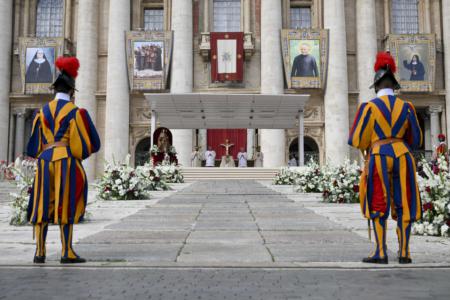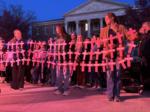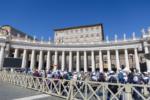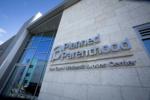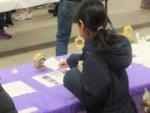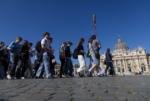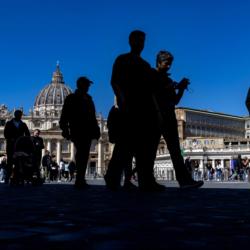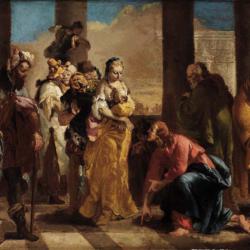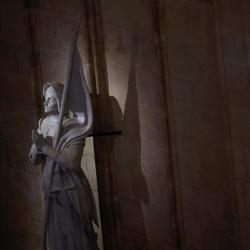Passion time
Our Lenten journey continues and its second phase, previously called Passiontide, brings us in a more focused way to the events of the Paschal Triduum.
The prayers of the Fifth Sunday of Lent up to the afternoon of Holy Thursday emphasize Jesus' journey towards Jerusalem, his coming encounter with death for our sins, and his ultimate triumph. The scriptural readings assigned to the Sundays and weekdays underscore this as well.
Palm Sunday of the Passion of the Lord, the sixth Sunday of the Lenten season, is decidedly different from the previous five. The décor of the church remains spare and sparse; perhaps the palm branches appear in the sanctuary. The vesture of the ordained is red. The scriptural texts direct us to the passion of the Lord. This year, "the Year of Luke," or Year C of the three-year cycle, brings the proclamation of the Lord's passion from Luke. The passion proclamation probably stands out to all of us because of its length. Unique to it -- in fact, the only time it is permitted -- is the distribution of the "parts" of the characters in the account among various readers.
The part of Christ ought to be proclaimed by a priest; the others are usually spread among three others: a Narrator, a Voice (for other individuals in the narration), and a part for the rest of the assembly, often labeled "the chorus." Obviously, extra preparation is needed for this proclamation. Except for the assembly, each of the others ought to have a place in the sanctuary where the text of the narration can be placed and some means for amplification for the voices is provided.
The length of the Gospel this day (and on Good Friday) may distract us from its power. We must be cautious about not being overwhelmed by the palms, procession, and passion proclamation to omit praying the prayers of the Mass. Remember this is done by careful attention to the priest's prayers and even following along in worship or devotional aids that contain those texts.
There are Masses for the Monday, Tuesday, and Wednesday of Holy Week. The Mass prayers have a different tone and emphasis and bring our attention to the events we'll celebrate later in the week. The preface of the Eucharistic Prayer during these days is proper, which means it must be used at all parish Masses. Interestingly, the vesture color reverts to violet.
The scriptural texts locate us in the events just prior to those of the Triduum. The first reading each day is from the Book of the Prophet Isaiah. The Gospel on Monday is from John's account of Jesus' visit to Bethany to the home of his friends, Martha and Mary and their recently restored-to-life brother, Lazarus. John tells us that the raising of Lazarus becomes a "reason" for some to seek the death of Jesus.
On Tuesday, also from John, is Jesus' predictions of the betrayers in his midst. Note that both Peter and Judas are predicted to fulfill that role. We see it played out in full when John's Passion account will be proclaimed on Good Friday.
The Gospel of Matthew's account of the plotting and connivance of Judas and governing authorities in the betrayal of Jesus is recounted for us. Because of the stealth of this day, it has the nickname "Spy Wednesday" and is decidedly not in favor of a "good" spy.
The tenor and tone of the scriptural texts and the Mass prayers of these days are of very obviously sad and dark and gloomy types.
These days serve as the final preparation for the parish community to enter the Triduum. A determined effort to assemble at Mass these days contributes to the faith of the parish and witnesses the significance of these sacred days to the wider community.
On the morning of Holy Thursday, which is still the Lenten season, it is customary for the diocesan bishop to gather his auxiliary bishops (if any), the priests and deacons and any of the members of consecrated life and the lay faithful to join the celebration of the Chrism Mass at the bishop's church -- the cathedral. If the bishop opts to do so, he may celebrate the Chrism Mass at another day and time, preferably close to Holy Thursday.
At this Mass, the bishop will bless the oils of the sick and catechumens, and consecrate the chrism to be used in his diocese in the coming year. Priests and deacons will usually make an extra effort to be at this Mass with their bishop, and the priests will renew their ordination promises.
The Chrism Mass for our archdiocese will be celebrated on Tuesday, April 15, 2025, at 11 a.m. at the Cathedral of the Holy Cross. The faithful are welcome. Check this link to the cathedral web page: bostoncathedral.com/mass-times. And if you cannot be at the cathedral, CatholicTV will bring it to you at home. Find information on how to watch at www.CatholicTV.org.
